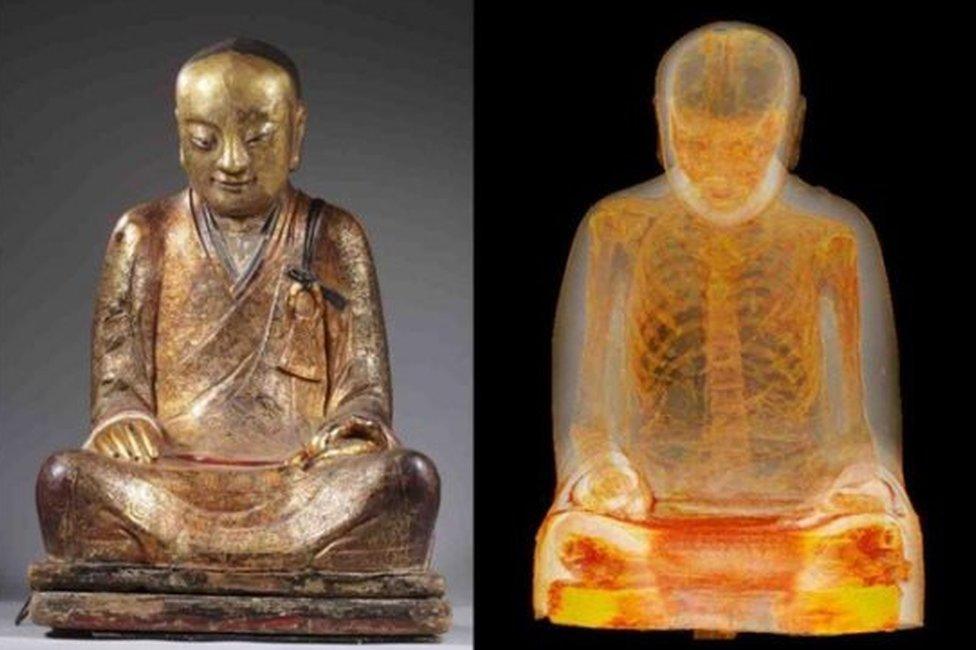China villagers launch Dutch court bid to retrieve mummy
- Published

X-ray analysis has revealed the remains of the monk (right) inside the Buddha statue
Chinese villagers are taking their fight to retrieve an allegedly stolen 1,000-year-old mummified monk to a Dutch court on Friday.
The monk's remains, which are inside a Buddha statue, were taken from a temple in the small Chinese village of Yangchun in Fujian province in 1995.
The villagers say a Dutch collector, whom they are suing, bought the statue in Hong Kong in 1996.
The statue was not seen until turning up at a show in Budapest in 2015.
In recent years, Beijing has vigorously tried to retrieve artefacts it says were stolen.
But so far there have been few successes via courts of law.
The latest case is complicated by the fact that the collector, Oscar van Overeem, is believed to have swapped the statue with another dealer, whose identity has been hidden, in exchange for several Buddhist artefacts in late 2015.
The statue's current whereabouts are not clear.
Looted statues returned to China in Pinault donation
Elgin Marbles: Commons motion urges return to Greece
The odd objects looted from Washington DC in 1814
In this case, the Buddha statue, known as the Zhanggong Patriarch, had been in the villagers' temple for centuries, and was also worshipped by residents of the neighbouring Dongpu village.
The villagers had hidden the mummy in their homes and even buried it in fields during the destruction wrought by China's Cultural Revolution in the 1960s and 70s, reported the South China Morning Post, external.
A scan of the statue a few years ago showed it contained the remains of a monk, thought to be 1,000 years old.
The villagers were able to prove they were descendants of the monk, their lawyer, Jan Holthuis, told AFP news agency.
He said they would argue that, according to Dutch law, "a person is not allowed to have a known body in their possession.
"We also have enough evidence to prove that the statue is indeed the one that was stolen from the temple," Mr Holthuis added.
According to the state-owned China News Service, the Dutch collector is contesting the claim on the grounds that it was filed by village committees - entities he claims cannot be seen as legal plaintiffs under Dutch law.
- Published28 June 2013
